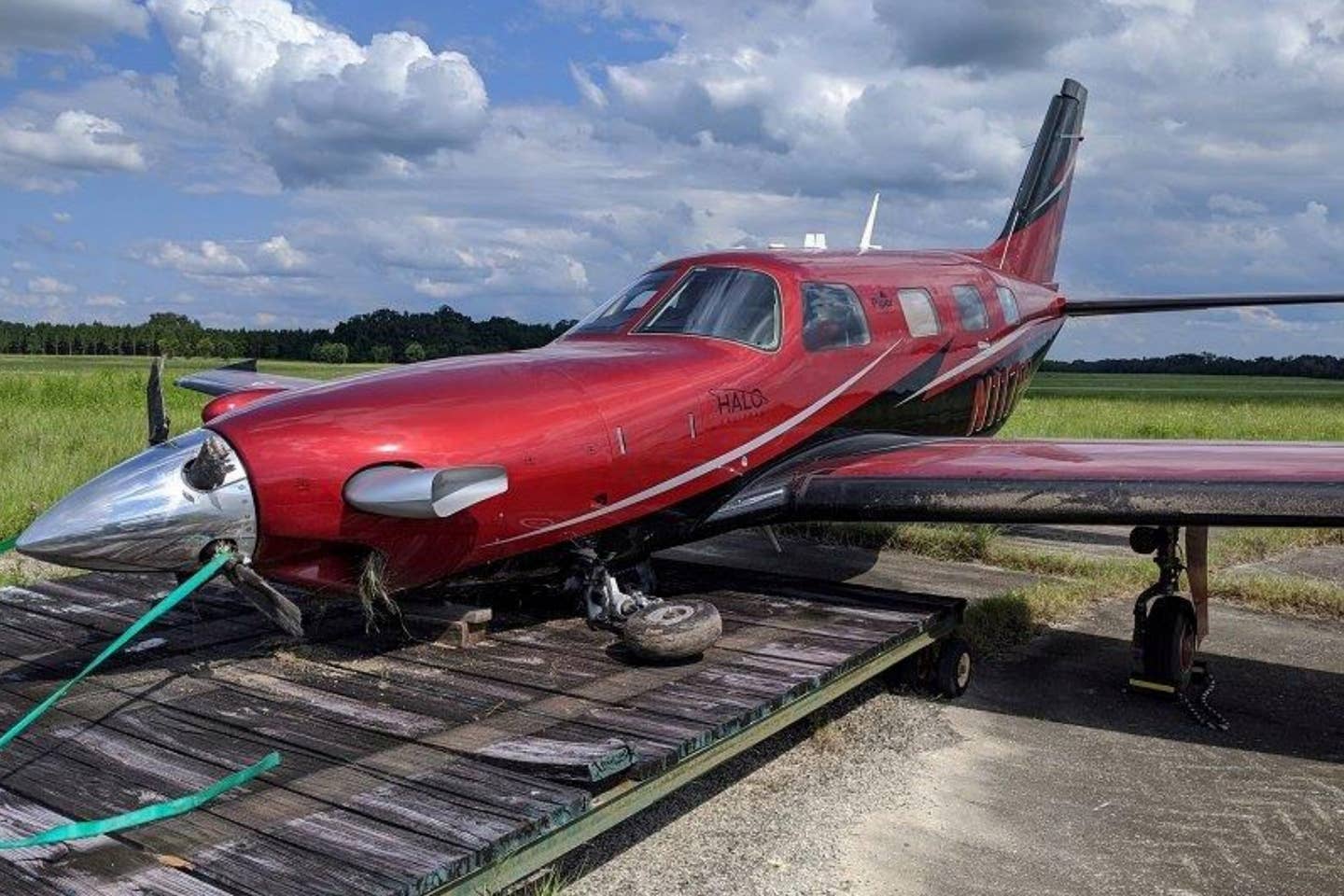
This M600 was substantially damaged during a runway excursion in Williston. Florida. NTSB
Most pilots have at one time or another read an NTSB accident report created by the independent US agency responsible for investigating mishaps in all forms of transportation. And most of us have thought: “Wow. I’d never do anything as crazy as that pilot.” Yet pilots of all categories continue to make mind-numbing mistakes in judgment when in command of an airplane. Sometimes pilots do make silly decisions and are lucky enough to get back on the ground safe and sound.
Some NTSB critics believe the board’s probable cause determinations don’t dig deeply enough into the pilot’s state of mind at the time of an accident or incident. To be fair to investigators, it’s not the NTSB’s job to explore the minds of pilots unless that led to the accident or incident itself. Like Joe Friday, the lead detective on the old Dragnet TVseries, the NTSB’s investigators really just want the facts. That leaves some of us to read between the lines for clues into how other pilots make decisions.
On June 15, 2020, a private pilot—non-instrument rated and owner of a new Piper PA-46 M600—lost control of his airplane shortly after touchdown in a right crosswind at the Williston Municipal Airport (X60) in Williston, Florida, following a 1,100-nm flight from Abilene, Texas. The aircraft was substantially damaged during the Part 91 VFR flight. Local Florida weather at the time of the accident was good VMC with just a few scattered clouds at 4,800 feet. The Piper M600 is a sophisticated single-engine, glass-cockpit aircraft powered by a 600 hp Pratt & Whitney Canada PT6 turboprop engine. It’s capable of carrying up to six people a distance of more than 1,600 nm at speeds up to 274 knots. The M600′s service ceiling is 30,000 feet, but without an instrument rating, the pilot would have been unable to legally fly higher than 17,500 feet. A search on FlightRadar 24 indicates the pilot made the entire trip at 17,250 feet, perfectly legal, but hardly smart. No word on whether he was talking to ATC along the way. All in all, his flights in the M600 represented quite a step up from the Cessna 172 the pilot had flown until the purchase.
The NTSB Factual Report—ERA20LA230—said the aircraft was tracking straight down the runway at touchdown, but then pulled hard right as soon as the nose gear touched the pavement. The nose gear separated from the airplane before the aircraft came to rest in the grass on side of the runway. Luckily neither the pilot nor the passenger aboard was injured during the excursion. The NTSB found only one item out of norms: the front tire pressure was 73.5 psi when it should have been 88 psi.
There were a number of news stories last summer about PA-46s experiencing excursions as the result of incorrect tire pressure, but that turned out not to be the case in the Williston accident. Even though the NTSB’s factual report didn’t include a probable cause, the NTSB reported there were additional facts that might point directly to the pilot’s poor judgment and risk management skills.
This private pilot had logged just 99 hours of total flight time, of which 54 were in the M600 since earning his private pilot certificate just 2 ½ months earlier. The only other airplane he’d experienced was a Cessna 172, for his first 45 hours of instruction. After accepting delivery of the turboprop, the pilot refused to attend the factory-authorized M600 training, preferring to send an independent flight instructor who later trained the pilot in the airplane. As it turned out, the 1,000-mile journey to Florida was the accident pilot’s first trip without his instructor aboard. A representative of the dealership that sold this pilot the M600 told investigators at the time of purchase, the pilot did not meet the flight experience requirements for the insurance company to provide coverage for the pilot to use the airplane. The pilot chose to make the flight without any insurance coverage on the aircraft, himself, his passenger, or for anything they might encounter along the way.
An M600 expert said they believed the excursion stemmed from poor pilot technique, as a result of the aircraft touching down at too high a speed, an incorrect roundout technique, and an inability to handle a crosswind landing.

Sign-up for newsletters & special offers!
Get the latest FLYING stories & special offers delivered directly to your inbox






